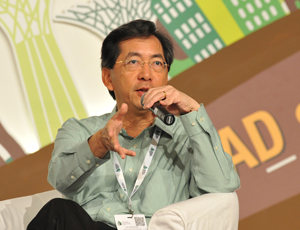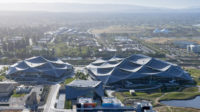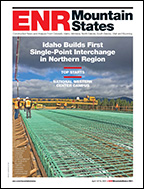

Growing its crop of certified green buildings from just 17 in 2005 to over 2,100 this year, Singapore announced a multi-pronged approach to extend its ambitious green building goals even further in the coming years. At the annual International Green Building Conference on Sept. 1-3, officials with the Building and Construction Authority (BCA) released key data from its energy benchmarking study and offered 102 million Singapore dollars ($81.5 million U.S.) in new incentives to developers, tenants and green product producers.
The BCA will employ these strategies to “green at least 80% of the entire building stock by 2030 and share our experience with cities in the tropical and sub-tropical belt,” says John Keung, CEO. To date, about 25% of the island nation-state's total gross floor area has been certified by BCA’s Green Mark program.
To quantify Singapore’s progress towards these goals, BCA revealed the results of its Building Energy Benchmarking Report. The study included data collected via legislation enacted in 2012 which made it mandatory for building owners to submit building information and energy consumption data to BCA annually. For the study’s first year, the BCA examined data from 884 commercial buildings, or about 92% of the city’s commercial stock. Future studies will look at other building types.
The study found that the energy utilization index (EUI) has improved by 5% during the five-year period from 2008 to 2013. Office buildings that were Green Mark-certified had an EUI that was 16% lower compared to non-certified buildings of comparable size. The EUI at certified hotels was 5% lower, while certified retail buildings had an EUI 7% lower.
The report also examined 54 Green Mark commercial buildings to compare data from before and after their retrofits. These buildings on average saw a 16% reduction of electricity consumption, which equates to SG$30 million savings annually.
The report confirms "that Green Mark commercial buildings are indeed more energy efficient,” says Khaw Boon Wan, minister for national development. “This is reassuring, especially for building owners who see bottom-line benefits from participating in this program.”
Getting Tenants to Go Green
In 2009, BCA introduced a SG$100-million ($80 million U.S.) incentive program for existing buildings to encourage developers and building owners to retrofit their facilities to achieve a significant improvement in energy efficiency. This month, BCA will begin providing an additional SG$50 million ($40 million U.S.) geared specifically towards small- and medium-business enterprise tenants and owners.
“Our recent benchmarking study confirmed that while Green Mark buildings generally performed better in terms of energy usage than non-Green Mark buildings, a higher Green Mark building can also perform poorly if the occupants and tenants do not adopt green fit-outs and practices,” Keung says. “In commercial office buildings, for example, tenants’ usage of electricity can be as high as half of the total electricity consumption in the building.”
The program co-funds 50% of the retrofitting cost or energy improvements, up to a maximum of SG$3 million for building owners and SG$20,000 for occupants.
But in addition to the carrot offered with incentives, Singapore also includes the proverbial stick in the form of new rules that require existing buildings to be recertified once they have to upgrade their cooling systems, which occurs on average every 10 to 15 years. “On top of that, we have the requirement for an energy audit every three years to make sure they run the building in the most efficient way possible to achieve whatever design commitment they made early on,” Keung says.
Product Innovation
The BCA also committed SG$52 million ($41.5 million U.S.) to set up a new Green Buildings Innovation Cluster, to foster innovation and improve green building technologies for tropical climates. The new hub—administered by BCA’s Centre for Sustainable Buildings and Construction at BCA Academy— consolidates the myriad of research, development and demonstration efforts already under way in Singapore. Stakeholders include academic/research institutions such as Singapore’s Nanyang Technological University (NTU) and various public and private developers.
“We hope we can continue to push the envelope to design and build greener buildings, but developing innovative solutions in the lab is only the first step,” Wan says. “We need more opportunities to bring solutions from the lab out to the real world – in actual buildings. We must make it easier and faster for these solutions to be adopted when we build or retrofit existing buildings.”
BCA Academy will also be getting its own tropical-flavored version of Flexlab, the world's first rotatable test facility that began operations this year at Lawrence Berkeley National Laboratory (LBNL) in California. Singapore’s Flexlab will be located on the roof of a new mid-rise building under construction at the Academy. The test facility will be completed in the second half of 2015 under a separate contract from the host building. LBNL staff will assist with the design.




Post a comment to this article
Report Abusive Comment